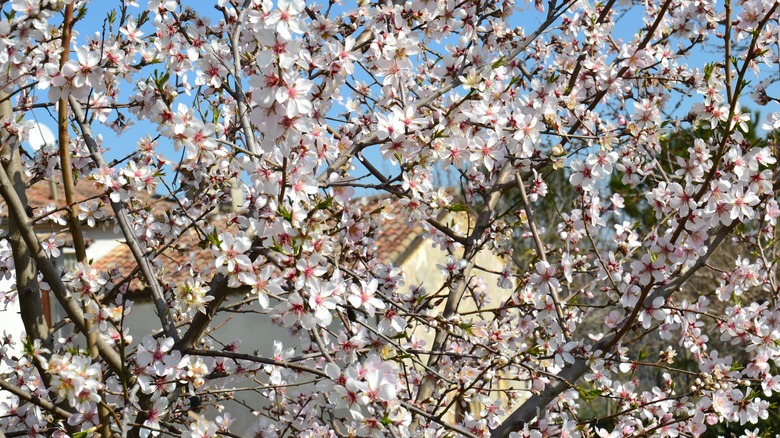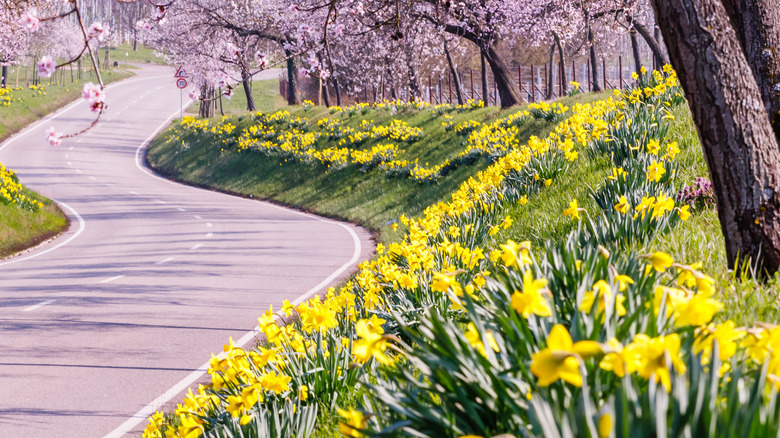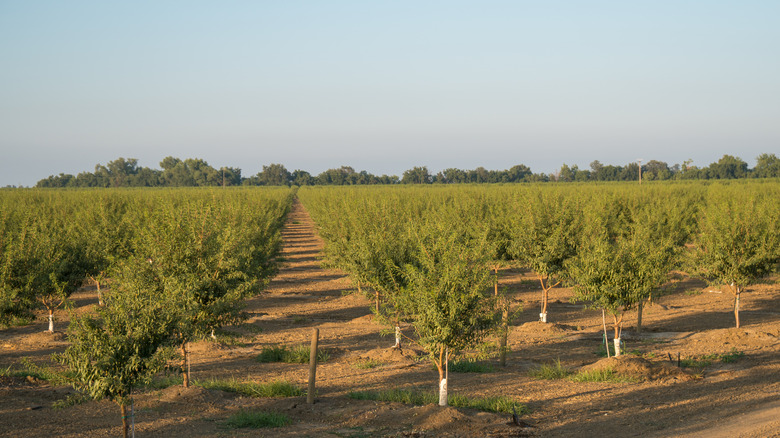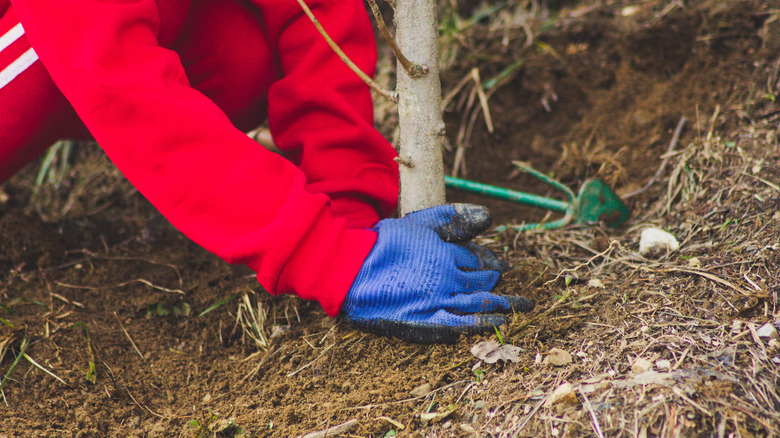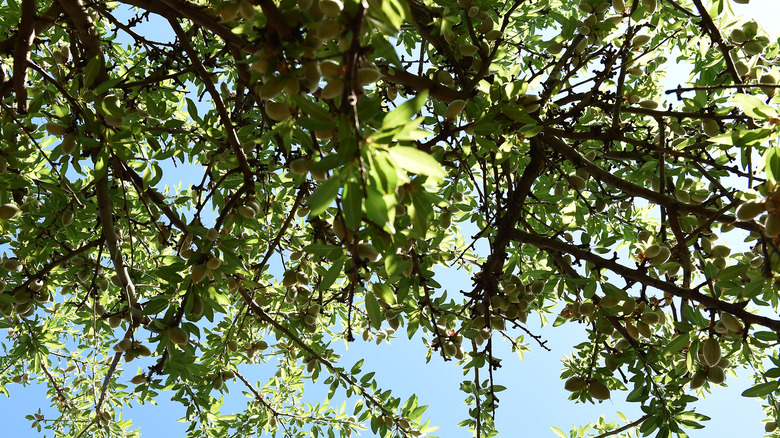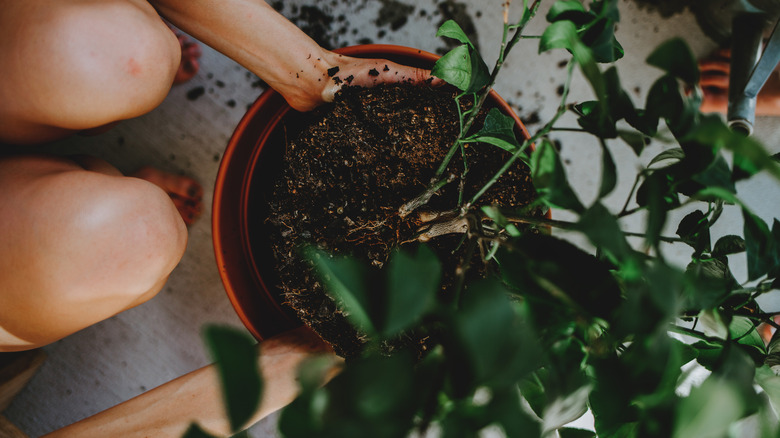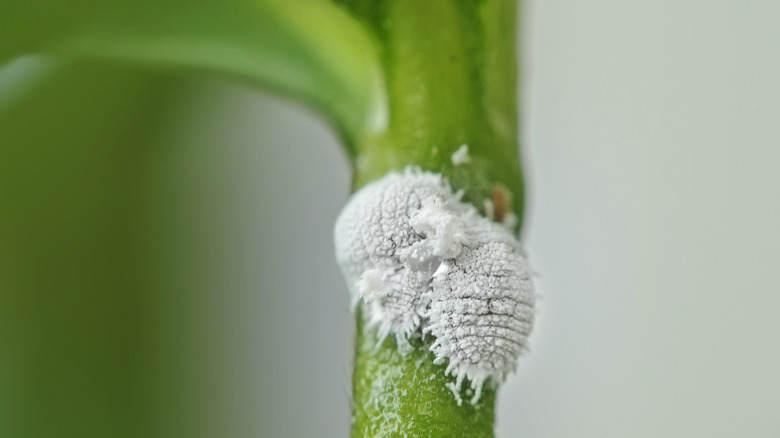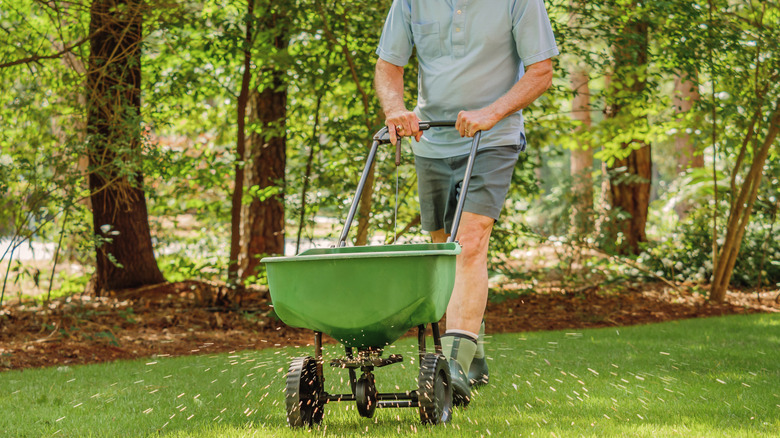How To Take Care Of An Almond Tree
The almond tree, which is also known as Prunus Amygdalus, a deciduous tree according to Wikifarmer, is a fruit tree that is native to Central Asia. According to Classroom, there are several ancient meanings to the tree, and it is one of the oldest trees around. They state that the tree is a symbol of beginnings in the bible, whereas, in the Jewish faith, the almond is known as The Tree of Life. In the Israeli culture, hope is the focus of the five-petaled almond blossom. Mentioned several times in the bible and found in the Old Testament, according to Plant Site.
The exquisite flowering tree, with intoxicating pink and white flowers, blossoms during the spring and produces seeds which are the fruit of the tree in the form of a hull. Within this hull lies the actual almond, which has several useful purposes, including almond oil, the actual nut itself and is also used in cosmetics. Interesting fact, almond tree blossoms are known to have both male and female parts, according to Garden Love to Know, but they still advise selecting two almond trees of different types for the best fruit outcome.
How to use almond tree in gardens
There are a number of ways to use almond trees in the garden. One of the most important things is to place the tree in a spacious area as they grow up to 30 feet tall with a spread of about 15 feet, according to Epic Gardening. Because of its growth span, you also want to choose a spot that is going to be the permanent location of the tree, making it ideal for a garden sitting area.
Whether you choose to make an almond tree a part of your garden for its aesthetics or to enjoy its fruit, both choices alone are incentive enough to put in the work required to grow the exquisite tree. The tree can be used in the garden in various ways, including using it as a backdrop or as a focal point, with other flowers or green shrubs planted around it. The majestic tree is certain to stand out in your landscape amidst other colorful plants. Considered an ornamental tree, this particular specimen is ideal for beautifying a front yard as well as a backyard.
How to grow almond trees
Though native to countries such as Iran, almond trees can also grow in other areas that have a Mediterranean climate. This includes certain locations in the United States, such as Central California, which is a leading almond producer, and some areas in the south like Texas and Georgia. According to MasterClass, almond trees thrive in areas that are hot and dry, making parts of Arizona another area in which the trees can be planted. Though they do best in hot climates, almond trees also require a limited exposure to cold temperatures for a number of hours, described as anywhere from 250-500 hours related to the dormancy of the buds breaking, according to Wikifarmer.
Some of the best things about investing in an almond tree are the nuts that come from the tree and the fact that the tree is self-pollinating. If you are interested in learning how to grow an almond tree, you first want to consider the soil used and ensure it drains well. Once planted, you will want to water the plant regularly without oversoaking it. Most importantly, examine your tree and the leaves for signs of pests to avoid having a sick tree.
How to care for almond tree
MasterClass provides a guideline for those caring for almond trees. If you are planting an almond tree or already have one, there are basics steps to take to make certain you reap the most fruit from the tree. Ensure your garden is free of pests and bugs, and maintain it in a sanitary manner to avoid diseases to the tree. This includes sanitation of garden tools which could be instrumental in contaminating the plant.
In terms of watering your plan, these trees require regular watering to sustain them. You will want to water your almond tree carefully, as it requires watering only at the base of the trunk of the tree, as the soil needs to be well hydrated, though not soaked, to avoid pests. You will further need to fertilize the tree, and MasterClass suggests doing so in the spring. Another fact mentioned is the importance of harvesting the nuts from the trees before worms take up residence in them. One very important note from MasterClass is the reduction of growth in the tree or the harvest of fruit, as this is a sign of an underlying problem. Keeping an eye on your almond tree is one of the best tools to avoid future damage and a limited harvest. Check your soil daily and examine the leaves for signs of pests. Caring for your almond tree properly is the best way to ensure it reaches its 50-year life span.
Varieties of almond trees
Almond trees produce either sweet or bitter almonds. Bitter almond trees are of the variety found in the wild and are not for human consumption. According to Morning Chores, there are a number of varieties of almond trees available from which edible almonds are produced. The differences are usually size, yield, blooming time, and chill hours, to name a few.
- Mission almond trees, also known as the Texas Mission Almond Tree, according to Nature Hills, does well in hot climates and is a late bloomer with pretty white blooms with pink centers. These trees require 500 chill hours.
- NE Plus almond trees are a French variety and are fast growers though they require a pollinizer. Considered a superfood, according to One Green World, this variety blooms in March and is ripe during the autumn months and has pink and white blossoms. This variety requires 250 chill hours.
- Carmel almond trees are known to ripen early in the season in early autumn and tend to produce smaller fruit and pink blooms. This variety of almond trees requires 400 chill hours, according to Willis Orchards.
- Garden Prince is a dwarf tree that ripens in early fall and requires 400 chill hours, according to Willis Orchards. When in bloom, this variety displays pretty pink blooms.
- Padre almond trees are late bloomers but excellent producers and, when in bloom, have white blooms. This variety requires 500 chill hours, according to Dave Wilson Growers.
Is almond tree toxic?
If you are wondering if almond trees are toxic, be aware that wild bitter almonds contain a substance that can be harmful to humans and animals. This particular almond has a chemical in it that breaks down into cyanide. Sweet almonds, on the other hand, are not lethal or harmful to pets. These are the almonds that are produced for consumption.
Whether bitter or sweet, it is not recommended, however, to give almonds to dogs as this could create medical problems such as pancreatitis as well as stomach issues, according to Wag Walking. What about the other parts of the tree? The parts of the bitter almond tree Prunus dulcis, which comes from the Amara variety, are all poisonous, including its pink flower, bark, leaves, and stems, according to Horse DVM. Though found in the Middle East and Asia, bitter almond trees are used in landscaping in North America, according to The Spruce Eats.
How to repot almond tree
Growing an almond tree in a container can be done with a few adaptations. A potted plant does best in cool temperatures following the tips provided on Gardening Know How. The first place to start is selecting the right size pot with good drainage, in medium to large, holding no less than 10 gallons of the perfect soil mix. To move the container around safely and easily, put the pot on a base with wheels so it can be moved when needed to get the best light available. They also advise temperature control anywhere from 70 to 80 degrees.
The rule of thumb for watering, according to them, is to water until there is seepage through the hole of the pot. Any future watering after that should be determined by testing the moisture of the dirt by checking the top of the soil with your fingers going down at least 2 inches to check for dryness. If dry, it is at that point when you water the plant. Expect the growth of your tree in a container to reach around 5 feet. Should you need to repot the tree, this can be done but be certain to not damage the roots and to have your new container, which should be two times larger than the original pot, ready to place the plant in. As with an outdoor tree, Gardening Know How suggests fertilizing after the first year during spring and autumn with high-quality nitrogen-based fertilizer.
Almond tree pests and diseases
If you are thinking of planting an almond tree or already have one, it's important to know how to care for the plant, as well as to recognize when your plant may be in trouble. How do you know if your almond tree is infested, sick, or dying? Inspect your trees for signs of anomalies.
According to Gardening Know How, some of the diseases that affect almond trees include fungus issues, several strains of canker, worms, and peachtree borers. They state that canker tends to show itself in areas where the tree has been pruned at the scaffold branches, as well as at the sites of the natural openings according to the site. They further state canker is more likely to show up after a rainfall when spores are spread in the air. According to Gardening Know How, once a tree has been pruned, it's important to be on the lookout for fruit flies and beetles, which have a tendency to be attracted to the wound of a tree, thus reducing the fruit yield. Check your plants daily to ensure they are healthy and without pests or disease.
How to use fertilizer with almond trees
There are a few things to know with regard to fertilizing almond trees primarily based on the age of the tree. According to The Almond Doctor, the age of the tree dictates how it should be fertilized. With a first-year tree, avoid using liquid fertilizer that contains nitrogen as it could damage the tree. The website also states the importance of fertilizing almond trees by following the rule of thumb of one ounce of product for every year of growth. Additionally noted is the fact that if you are dealing with stunted tree growth, it is because of a root problem, in which case it is suggested to apply fertilizer more frequently but in smaller doses.
Their advice on watering your trees once fertilized is to not overdo it, thus avoiding damage, though it must be watered once the product is applied. If you are fertilizing a tree in an extremely warm climate, the chances of damage are lessened. As far as fertilization of mature trees, this should be done twice a year. According to Wikifarmer, nitrogen and potassium are paramount to the growth of the tree, so it's advisable to check the PH of the soil frequently. You can find pH kits at your local nursery. In terms of what products to use on mature trees, manure is highly suggested and is a good choice. Almond trees grown commercially are normally fertilized in the last two summer months.
